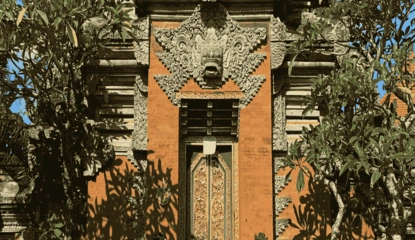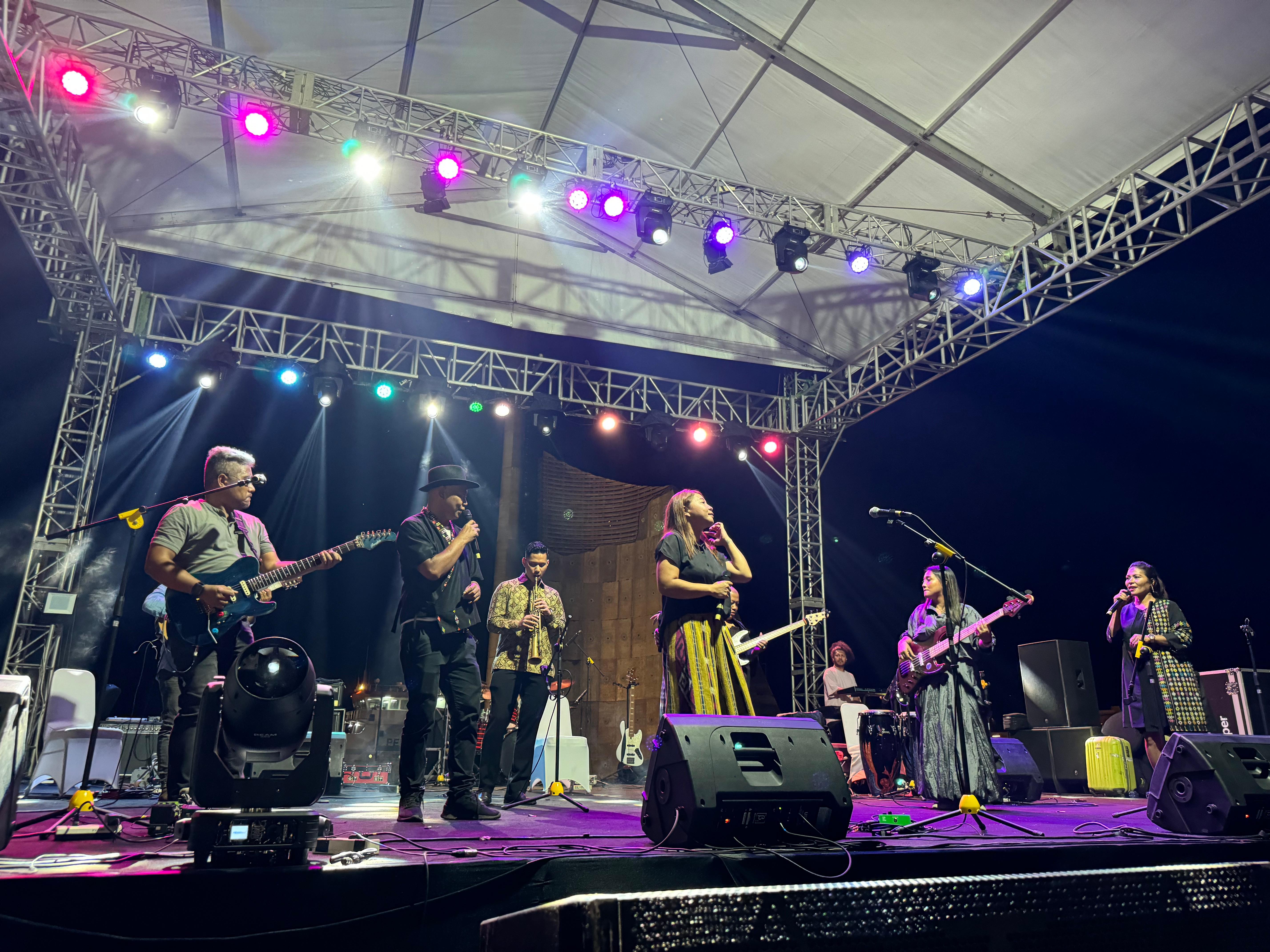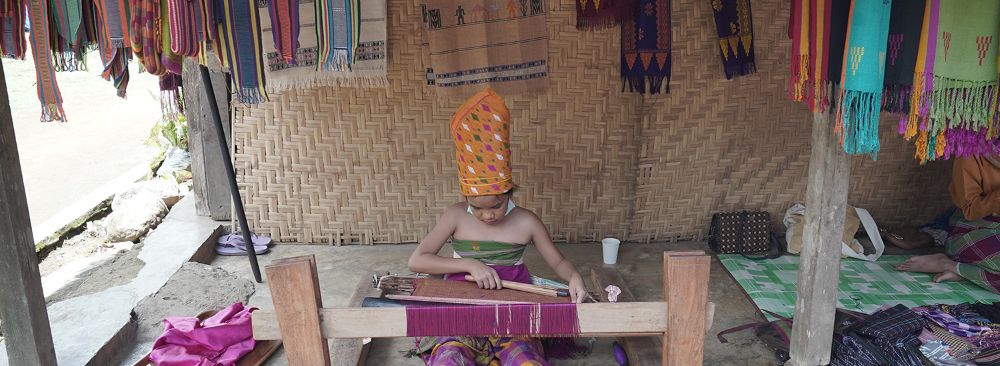The Sasando, a unique musical instrument originating from Rote Island in East Nusa Tenggara (NTT), Indonesia, has gained international recognition for its captivating sound and beautiful design. This traditional instrument has graced prestigious stages worldwide, including events such as the 42nd ASEAN Summit and a G20 side event in Labuan Bajo in 2022.
What is the Sasando?
The Sasando is crafted from natural materials, including the fan-shaped lontar palm leaves, which are bent into a semicircular frame. This frame serves as both a resonator and the instrument's distinctive body. The strings, traditionally made from plant fibers, are now often crafted from nylon for durability. The main tube that holds the strings is usually made from bamboo, around which the lontar leaves are arranged to create a resonant, rounded body that amplifies the sound. This unique design gives the Sasando its signature timbre, blending warm, resonant notes with the soft crackle of the palm leaf resonator.
How Sasando is Made
Making a Sasando is a meticulous process that requires skill and patience. Artisans first carefully select high-quality bamboo and lontar leaves. The bamboo tube is hollowed out, forming the core where strings are attached. Strings are set across the tube and held in place with frets crafted from wood. These frets control the pitch, allowing for a range of notes. The lontar leaves are then bent and secured around the tube to create the rounded resonator. Each Sasando is customized, with the number of strings and tuning adjusted based on its intended style—whether traditional or modernized.
The Origins of the Sasando
Local folklore offers two fascinating origin stories of the Sasando, believed to have been invented in the 7th century:
1. The Story of Sangguana: One tale tells of a young man named Sangguana, who, after being shipwrecked on Ndana Island, was brought before King Takalaa of Nusaklain Palace. Sangguana impressed the king and the court with his artistic talents, especially captivating the princess. To win her hand, he was tasked with creating a musical instrument. Inspired by a dream in which he played a mysterious instrument, Sangguana crafted the first Sasando, originally called “sandu.” With its seven strings, it was able to play harmonies in unison, a design inspired by the local language where "sya" means "seven." Over time, the instrument evolved and came to be known as Sasando.
2. The Tale of Lunggi Lain and Balok Ama Sina: Another story recounts how two friends, Lunggi Lain and Balok Ama Sina, created the Sasando while crafting a “haik,” a lontar-leaf container. They noticed that fibers of the leaves produced musical notes when plucked. Inspired by this discovery, they developed an instrument using the leaf fibers as strings and the haik as a resonator, leading to the creation of the Sasando as we know it today.
Types of Sasando
Photo credit: https://symphoniamusik.com
There are three popular variations of the Sasando, each adapted for different musical styles and occasions:
1. Sasando Gong
This traditional version, with 12 nylon strings, produces soft, flowing melodies and is often used to accompany folk songs and Rote's traditional dances. It embodies the authentic, melodic sound of the Sasando and remains central to the island’s cultural practices.
2. Sasando Biola (Violin Sasando)
Originating in Kupang in the late 18th century, the Sasando Biola was enhanced by Edu Pah, a well-known Sasando musician. With 48 strings and a larger body, it produces sounds akin to a violin’s, allowing for nuanced, graceful melodies. This version is often played during cultural festivals and ceremonial events in East Nusa Tenggara (NTT), accompanying traditional dance.
3. Electric Sasando
Developed by Arnoldus Edon in the 1960s, this modern version features a transducer that amplifies the sound, making it suitable for large audiences. It typically has around 30 strings and maintains the lontar-leaf body for authenticity. Often used in international performances, the Electric Sasando allows the music to reach wider audiences while maintaining its traditional charm.
Playing the Sasando: Performances, Occasions, and Traditions
Photo credit: Sasando performance - ANTARA News
Historically, the Sasando was played during various traditional Rote ceremonies, such as weddings, community gatherings, and harvest celebrations. The instrument was also central to rituals and storytelling events, where the Sasando’s ethereal tones would enhance the narrative. Today, it remains a core part of Rote Island’s cultural festivities and is frequently played in state ceremonies and international music festivals, representing Indonesian heritage.
Who Plays the Sasando
Traditionally, the right to play the Sasando was a privilege of certain skilled individuals, often learned artisans who devoted themselves to mastering the instrument’s unique sound. Today, playing the Sasando is more accessible, and it has become a source of pride for people of Rote. Both men and women can be seen performing it, with notable Sasando musicians like Edu Pah and Arnoldus Edon popularizing its use globally.
Musical Repertoire:
The Sasando’s music repertoire has expanded from traditional Rote folk songs to more contemporary compositions. Typical pieces played on the Sasando include Rote folk tunes, Christian hymns, and ceremonial songs, often modified to fit the Sasando's melodic style. Some musicians have even adapted Western pieces and popular songs for the Electric Sasando, showcasing its versatility.
A Sasando performance in Washington DC at the 2018 Indonesia-USINDO Voyage To Indonesia Gala Dinner.
Photo source: https://www.youtube.com/watch?v=geuXLbZ98pI
The Sasando’s captivating sound has been showcased on world stages, from government summits to international music festivals. Videos of Sasando performances, including solo recitals and ensembles, can be found online, with notable performances on YouTube and other platforms. These recordings offer listeners a taste of the Sasando’s range, from soothing traditional melodies to energetic contemporary interpretations.
The Cultural Legacy of Sasando
Today, the Sasando is more than just a musical instrument for the people of Rote; it is a treasured part of Indonesia’s cultural heritage. As it continues to captivate audiences worldwide, the Sasando represents the ingenuity and artistry of the Indonesian people. Its preservation and promotion have become a national priority, inspiring pride and a commitment to maintaining traditional arts.
Interested in Indonesia's rich culture? Follow @wonderfulindonesia on Instagram to explore the fascinating traditional arts, culture, and other spectacular destinations across #WonderfulIndonesia.












